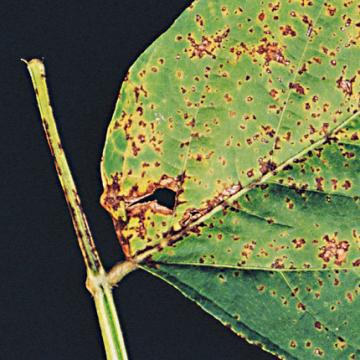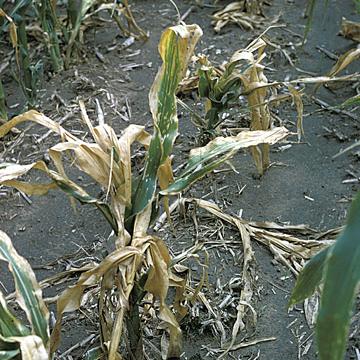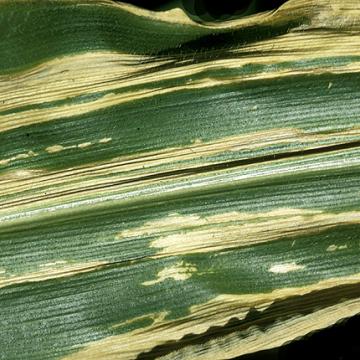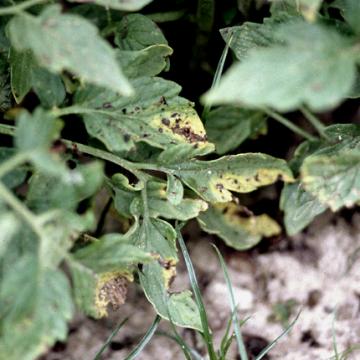DISEASE: Bacterial pustule
HOST: Soybean
Early symptoms are minute, pale green spots on young leaves. Later, small pustules form in the center of spots, best observed on underside of leaves. Spots vary in size and darken with age and lesions coalesce. Dead areas are torn away by wind.
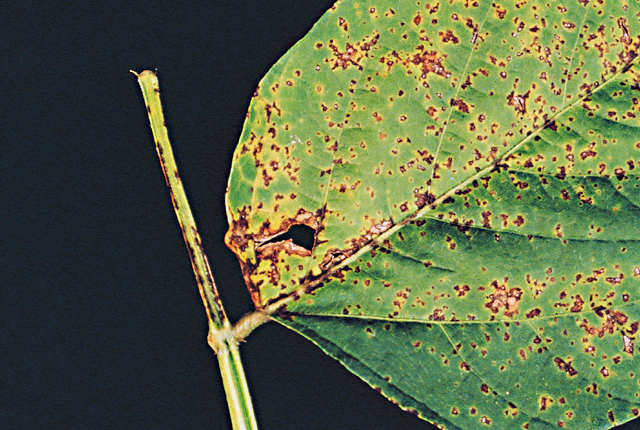
Bacterial pustule | Soybean
DISEASE: Bacterial pustule
HOST: Soybean (Glycine max)
PATHOGEN: Xanthomonas axonopodis pv. glycines
PATHOGEN SYNONYM: Xanthomonas campestris pv. glycines
SOURCE: APS
DISEASE: Goss's bacterial wilt and blight
HOST: Corn (Maize)
Wilted, dying plants. Leaves have gray to light yellow stripes and irregular margins that follow leaf veins. Systemically infected plants usually have orange vascular bundles.
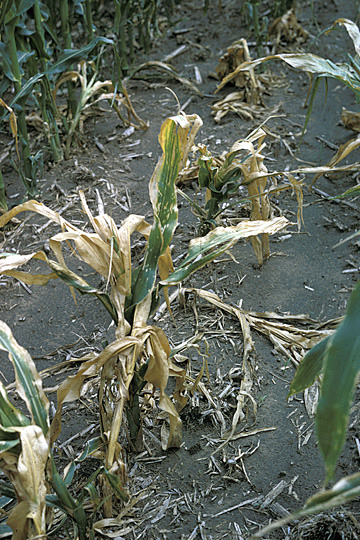
Goss's bacterial wilt and blight | Corn (Maize)
DISEASE: Goss's bacterial wilt and blight
HOST: Corn (Maize) (Zea mays)
PATHOGEN: Clavibacter michiganensis subsp. nebraskensis
PATHOGEN SYNONYM: Corynebacterium nebraskense
SOURCE: A. Vidaver
DISEASE: Goss's bacterial wilt and blight
HOST: Corn (Maize)
The disease causes necrotic leaf lesions, which typically have dark flecks (freckles) within the lesions (not seen here).
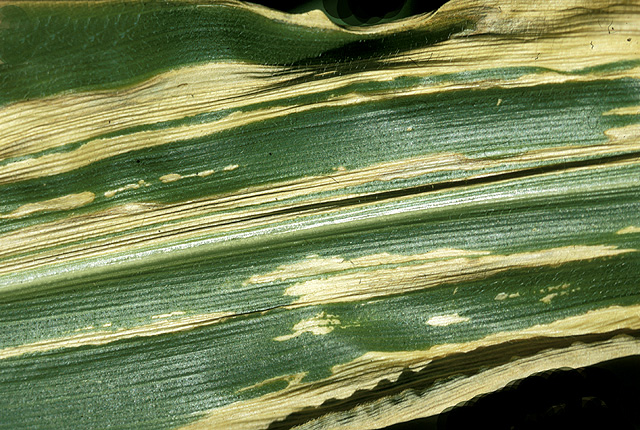
Goss's bacterial wilt and blight | Corn (Maize)
DISEASE: Goss's bacterial wilt and blight
HOST: Corn (Maize) (Zea mays)
PATHOGEN: Clavibacter michiganensis subsp. nebraskensis
PATHOGEN SYNONYM: Corynebacterium nebraskense
SOURCE: A. Vidaver
DISEASE: Syringae leaf spot
HOST: Tomato
Leaves with brown necrotic lesions and chlorotic margins. Symptoms vary greatly among cultivars. Some have black or brown lesions with bright yellow, chlorotic areas and others do not have yellowing.
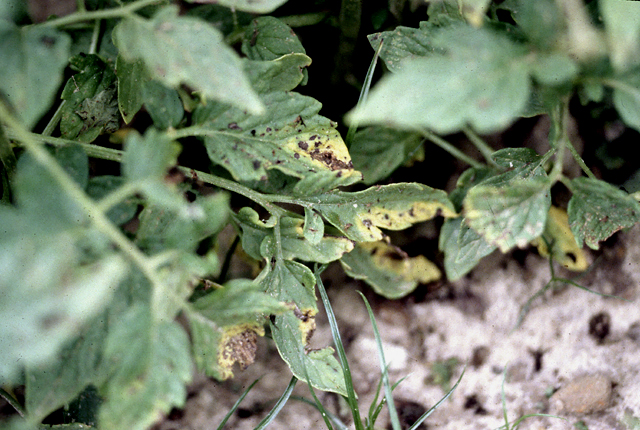
Syringae leaf spot | Tomato
DISEASE: Syringae leaf spot
HOST: Tomato (Lycopersicon esculentum)
PATHOGEN: Pseudomonas syringae pv. syringae
SOURCE: R. Gitaitis


